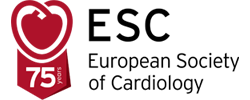Prognostic value of myocardial viability detected by myocardial contrast echocardiography early after acute myocardial infarction
Dwivedi G, Janardhanan R, Hayat SA, Swinburn JM, Senior R.
Comment:
This study examined 95 patients who underwent low-power MCE following acute MI (87% thrombolysed for STEMI) and they were then followed up for 46±16 months. The extent of residual myocardial viability by MCE independently predicted hard end-points of cardiac death and repeat MI.
Reference: J Am Coll Cardiol (2007); 50; 327-34
Myocardial contrast echocardiography accurately reflects transmurality of myocardial necrosis and predicts contractile reserve after acute myocardial infarction
Janardhanan R, Moon JC, Pennell DJ, Senior R.
Comment:
MCE and cardiac MRI (CMR) were performed in 42 patients 7-10 days after thrombolysis for STEMI. MCE was used to correlate perfusion with transmural extent of infarction (TEI) as defined by gadolinium-CMR. Contractile reserve was assessed with low-dose dobutamine 12 weeks following revascularization. Qualitative and quantitative MCE significantly inversely correlated with TEI and degree of contractile reserve. The study proved that MCE can refelct the transmurality of acute MI and, like CMR, predict the presence or absence of contractile reserve.
Reference: Am Heart J 2005;149(2):355-62
Identification of hibernating myocardium with quantitative intravenous myocardial contrast echocardiography: comparison with dobutamine echocardiography and thallium-201 scintigraphy
Shimoni S, Frangogiannis NG, Aggeli CJ, Shan K, Verani MS, Quinones MA, et al.
Comment:
Patients with ischaemic cardiomyopathy underwent MCE (n=20), dobutamine echocardiography (n=18) and thallium scintigraphy (n=16) 1-5 days prior to planned CABG surgery. Repeat echocardiography was performed at 3-4months. Quantitative MCE parameters were significantly different between dysfunctional segments that recovered function (hibernating) versus those which remained dysfunctional. MCE had similar senstitity to thallium scanning and superior specificity for predicting functional recovery on a segmental level.
Reference: Circulation 2003;107(4):538-44
Microvascular structural correlates of myocardial contrast echocardiography in patients with coronary artery disease and left ventricular dysfunction: implications for the assessment of myocardial hibernation
Shimoni S, Frangogiannis NG, Aggeli CJ, Shan K, Quinones MA, Espada R, et al.Comment:
In this study, 20 patients underwent triggered MCE during continuous contrast infusion 24hrs prior to myocardial biopsy at time of CABG surgery. Quantitative parameters correlated closely with microvascular and capillary density and inversely correlated with collagen content (i.e. fibrosis). The study showed that microvascular integrity is directly related to MCE parameters and that these parameters can predict functional recovery following revascularisation.
Reference: Circulation 2002;106(8):950-6
Other topics related to Contrast
- Historical & Landmark Papers
- Contrast for improving LV structural & functional assessment
- MCE for detection of myocardial ischaemia
- MCE for detection of myocardial viability
- MCE reviews & guidelines
- Safety of contrast agents
- Methodological Issues/Technique
- Left Ventricular Volumes and Regional Wall Motion
- Myocardial Perfusion

 Our mission: To reduce the burden of cardiovascular disease.
Our mission: To reduce the burden of cardiovascular disease.